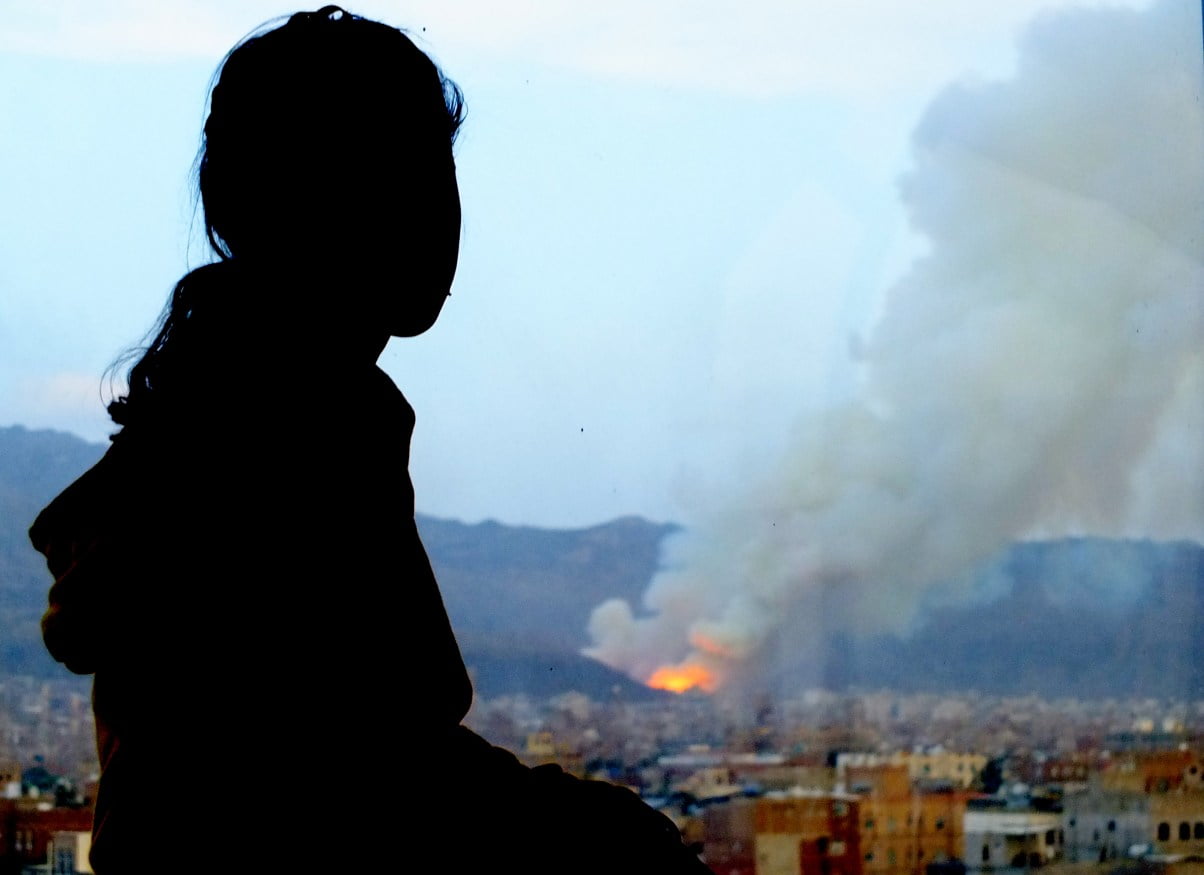The United Nations Security Council reached a major milestone in January when it approved a new UN mission in Yemen. The mission will oversee and help implement a local ceasefire agreement that has the potential to lay the groundwork for a broader political agreement to end this long running conflict.
This was the first significant diplomatic and political breakthrough in nearly four years of Yemen’s devastating war. It is a demonstration of the role the United Nations can play in helping to reduce the burden of conflict on civilian populations, and potentially to end the conflict itself.
Still, the agreement that resulted in a sharp reduction of violence in a key part of the country is extremely fragile and could unravel unless key international players maintain pressure on the parties to the conflict.


Secretary-General António Guterres (center), Swedish Foreign Minister, Margot Wallström (center left), and UN Special Envoy for Yemen Martin Griffiths (center right), with participants of the Yemeni political consultations in Sweden on 13 December 2018.
A new role for the United Nations in Yemen
Since the outbreak of the conflict, the United Nations has played two key roles in the Yemen. First, UN humanitarian agencies like the World Food Program and UNICEF have been providing on-the-ground relief for populations besieged by conflict. That effort has been monumental, and if not for the work of these relief agencies, the humanitarian situation would be even worse.
Second, the United Nations has played a political role, seeking to broker a resolution to this conflict. Those efforts were extremely slow to get off the ground, with parties to the conflict more interested in inflicting monumental suffering on the civilian population of Yemen than coming together around a negotiating table. However, at the end of 2018 the calculations of the parties changed and UN envoy Martin Griffiths was able to bring parties together in Sweden, where they signed an initial agreement that called for (among other things) a prisoner exchange and, significantly, a cessation of hostilities around the key port city of Hodeidah.
This is known around the United Nations as the “Stockholm Agreement,” and it calls for a new United Nations mission to oversee and support its implementation.
Enter: The United Nations Mission to Support the Hodeidah Agreement (UNMHA).
This mission was created by the Security Council to support the implementation of several aspects of this agreement. This includes supervising the redeployment of armed groups in specific sites and overseeing a province-wide ceasefire.
The mission formally deployed on January 16. The situation remains extremely tenuous and the agreement is fragile. “While fighting inside the critical port city has dramatically decreased since warring parties agreed to a ceasefire at talks in Sweden last December, recent clashes demonstrate the extremely fragile state of the agreement,” the International Rescue Committee said in a statement released today.
The key question going forward is whether or not this agreement can hold. And, if so, whether or not that this local ceasefire can be harnessed to achieve a broader political and peace agreement to end this brutal conflict.
This is still a tall order. But after four years of being the single worst humanitarian crisis in the world, the first few weeks of 2019 have seen the most significant reduction of violence in four years of war in Yemen.
